Elise Cutts at Quanta:
 We learn in grade school that water freezes at zero degrees Celsius, but that’s seldom true. In clouds, scientists have found supercooled water droplets as chilly as minus 40 C, and in a lab in 2014, they cooled water to a staggering minus 46 C before it froze. You can supercool water at home: Throw a bottle of distilled water in your freezer, and it’s unlikely to crystallize until you shake it.
We learn in grade school that water freezes at zero degrees Celsius, but that’s seldom true. In clouds, scientists have found supercooled water droplets as chilly as minus 40 C, and in a lab in 2014, they cooled water to a staggering minus 46 C before it froze. You can supercool water at home: Throw a bottle of distilled water in your freezer, and it’s unlikely to crystallize until you shake it.
Freezing usually doesn’t happen right at zero degrees for much the same reason that backyard wood piles don’t spontaneously combust. To get started, fire needs a spark. And ice needs a nucleus — a seed of ice around which more and more water molecules arrange themselves into a crystal structure.
The formation of these seeds is called ice nucleation. Nucleation is so slow for pure water at zero degrees that it might as well not happen at all. But in nature, impurities provide surfaces for nucleation, and these impurities can drastically change how quickly and at what temperature ice forms.
more here.

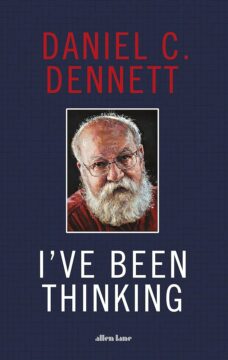 The philosopher Wilfrid Sellars thought that philosophy involved the reconciliation of disparate facts. Consider the disconnect between what he called the ‘scientific’ and the ‘manifest’ images of the world. Science describes a domain of fundamental particles situated in fields of force, spread out across a four-dimensional spacetime. Ordinary human life contains conscious creatures who make decisions, puzzle over problems, and find things good and beautiful. How do we integrate these two stories into a unified whole? One of the tasks of philosophy, Sellars said, was ‘to understand how things in the broadest possible sense of the term hang together in the broadest possible sense of the term’.
The philosopher Wilfrid Sellars thought that philosophy involved the reconciliation of disparate facts. Consider the disconnect between what he called the ‘scientific’ and the ‘manifest’ images of the world. Science describes a domain of fundamental particles situated in fields of force, spread out across a four-dimensional spacetime. Ordinary human life contains conscious creatures who make decisions, puzzle over problems, and find things good and beautiful. How do we integrate these two stories into a unified whole? One of the tasks of philosophy, Sellars said, was ‘to understand how things in the broadest possible sense of the term hang together in the broadest possible sense of the term’.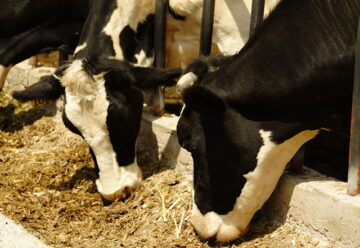 In the urgent quest for a more sustainable global food system, livestock are a mixed blessing. On the one hand, by converting fibrous plants that people can’t eat into protein-rich meat and milk, grazing animals like cows and sheep are an important source of human food. And for many of the world’s poorest, raising a cow or two — or a few sheep or goats — can be a key source of wealth.
In the urgent quest for a more sustainable global food system, livestock are a mixed blessing. On the one hand, by converting fibrous plants that people can’t eat into protein-rich meat and milk, grazing animals like cows and sheep are an important source of human food. And for many of the world’s poorest, raising a cow or two — or a few sheep or goats — can be a key source of wealth.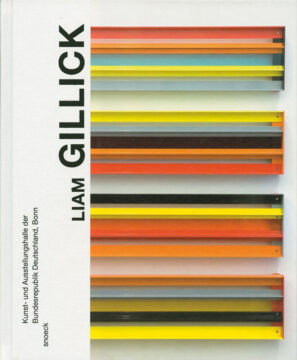 THE TWO THINGS THAT I STARTED WITH at Bozar were the novel and the film, which is almost like a cliché. The relationship between a novel and a film always has a particular connection and disconnection at the same time. As a kid, I would look at novelizations of films. Or find the book that became the film. And I was always fascinated by the gap in between these two things: the fact that the novel (if the novel was written before the film) bore no relationship to the film that I saw. And vice versa: that it could work the other way around, that a novel written after a film can often be almost a transliteration of the film. So for this particular exhibition at Bozar, which has to do with the weight of history, I did fall back a little bit on the story structure, on the idea of someone who cannot enter, who cannot arrive, who’s always on the outside. And the novel and the film had the same name in this case—A Max De Vos—but their content was completely different.
THE TWO THINGS THAT I STARTED WITH at Bozar were the novel and the film, which is almost like a cliché. The relationship between a novel and a film always has a particular connection and disconnection at the same time. As a kid, I would look at novelizations of films. Or find the book that became the film. And I was always fascinated by the gap in between these two things: the fact that the novel (if the novel was written before the film) bore no relationship to the film that I saw. And vice versa: that it could work the other way around, that a novel written after a film can often be almost a transliteration of the film. So for this particular exhibition at Bozar, which has to do with the weight of history, I did fall back a little bit on the story structure, on the idea of someone who cannot enter, who cannot arrive, who’s always on the outside. And the novel and the film had the same name in this case—A Max De Vos—but their content was completely different. On September 22, 1862, President
On September 22, 1862, President 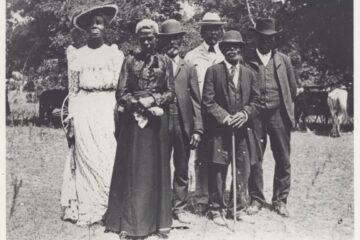 On “Freedom’s Eve,” or the eve of January 1, 1863, the first Watch Night services took place. On that night, enslaved and free African Americans gathered in churches and private homes all across the country awaiting news that the Emancipation Proclamation had taken effect. At the stroke of midnight, prayers were answered as all enslaved people in Confederate States were declared legally free. Union soldiers, many of whom were black, marched onto plantations and across cities in the south reading small copies of the Emancipation Proclamation spreading the news of freedom in Confederate States. Only through the
On “Freedom’s Eve,” or the eve of January 1, 1863, the first Watch Night services took place. On that night, enslaved and free African Americans gathered in churches and private homes all across the country awaiting news that the Emancipation Proclamation had taken effect. At the stroke of midnight, prayers were answered as all enslaved people in Confederate States were declared legally free. Union soldiers, many of whom were black, marched onto plantations and across cities in the south reading small copies of the Emancipation Proclamation spreading the news of freedom in Confederate States. Only through the  Dear Reader,
Dear Reader,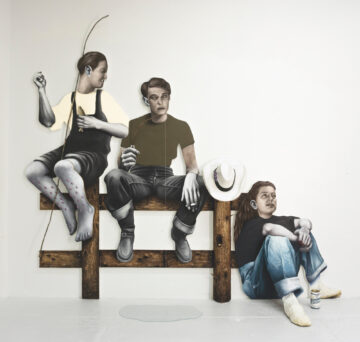 A hint of blue on the horizon meant morning was coming. And as they have for the past fifty-four years, Audrey and Gary Revell stepped out their screen door, walked down a ramp, and climbed into their pickup truck. Passing a cup of coffee back and forth, they headed south into Tate’s Hell—one corner of a vast wilderness in Florida’s panhandle where the Apalachicola National Forest runs into the Gulf of Mexico. Soon, they turned off the road and onto a two-track that stretched into a silhouette of pine trees. Their brake lights disappeared into the forest, and after about thirty minutes, they parked the truck along the road just as daylight spilled through the trees. Gary took one last sip of coffee, grabbed a wooden stake and a heavy steel file, and walked off into the woods. Audrey slipped on a disposable glove, grabbed a bucket, and followed. Gary drove the wooden stake, known as a “stob,” into the ground and began grinding it with the steel file. A guttural noise followed as the ground hummed. Pine needles shook, and the soil shivered. Soon, the ground glowed with pink earthworms. Audrey collected them one by one to sell as live bait to fishermen. What drew the worms to the surface seemed like sorcery. For decades, nobody could say exactly why they came up, even the Revells who’d become synonymous with the tradition here. They call it worm grunting.
A hint of blue on the horizon meant morning was coming. And as they have for the past fifty-four years, Audrey and Gary Revell stepped out their screen door, walked down a ramp, and climbed into their pickup truck. Passing a cup of coffee back and forth, they headed south into Tate’s Hell—one corner of a vast wilderness in Florida’s panhandle where the Apalachicola National Forest runs into the Gulf of Mexico. Soon, they turned off the road and onto a two-track that stretched into a silhouette of pine trees. Their brake lights disappeared into the forest, and after about thirty minutes, they parked the truck along the road just as daylight spilled through the trees. Gary took one last sip of coffee, grabbed a wooden stake and a heavy steel file, and walked off into the woods. Audrey slipped on a disposable glove, grabbed a bucket, and followed. Gary drove the wooden stake, known as a “stob,” into the ground and began grinding it with the steel file. A guttural noise followed as the ground hummed. Pine needles shook, and the soil shivered. Soon, the ground glowed with pink earthworms. Audrey collected them one by one to sell as live bait to fishermen. What drew the worms to the surface seemed like sorcery. For decades, nobody could say exactly why they came up, even the Revells who’d become synonymous with the tradition here. They call it worm grunting. Besides being a linguist, Chomsky is a respected international political analyst. Of his more than one hundred books, four are specifically about Israel – its wars, governments, and aggressions against the Palestinian people. Despite hundreds of requests from the world press, he has not analyzed the Hamas attack on October 7 and the destruction of Gaza because he had a massive stroke last June. He has difficulty speaking, and the right side of his body is numb.
Besides being a linguist, Chomsky is a respected international political analyst. Of his more than one hundred books, four are specifically about Israel – its wars, governments, and aggressions against the Palestinian people. Despite hundreds of requests from the world press, he has not analyzed the Hamas attack on October 7 and the destruction of Gaza because he had a massive stroke last June. He has difficulty speaking, and the right side of his body is numb. “I may die before my time.” The English philosopher Gillian Rose (1947-1995) opened one of her final lectures with these words; soon after, she would die of cancer at the age of 48. Rose’s words were doubly prescient. While her reputation has long been overshadowed by that of her more famous sister, the literary critic Jacqueline Rose, Gillian’s time seems to have arrived at last. Earlier this year in the U.K. Penguin Classics reissued Rose’s forthright memoir Love’s Work (1995), for which she is best known. The book, with its intimate yet unsentimental portrayal of sex, illness and death—in response to her cancer diagnosis, the author reaches “for my favourite whisky bottle” and vows “not to cease wooing, for that is my life affair”—has captivated many of its readers. London’s literati gathered in April at the London Review Bookshop for an event on Love’s Work, and preparations are already underway to mark the thirty years that have passed since the book’s publication and Rose’s death.
“I may die before my time.” The English philosopher Gillian Rose (1947-1995) opened one of her final lectures with these words; soon after, she would die of cancer at the age of 48. Rose’s words were doubly prescient. While her reputation has long been overshadowed by that of her more famous sister, the literary critic Jacqueline Rose, Gillian’s time seems to have arrived at last. Earlier this year in the U.K. Penguin Classics reissued Rose’s forthright memoir Love’s Work (1995), for which she is best known. The book, with its intimate yet unsentimental portrayal of sex, illness and death—in response to her cancer diagnosis, the author reaches “for my favourite whisky bottle” and vows “not to cease wooing, for that is my life affair”—has captivated many of its readers. London’s literati gathered in April at the London Review Bookshop for an event on Love’s Work, and preparations are already underway to mark the thirty years that have passed since the book’s publication and Rose’s death. ‘The trick is to create a world,’
‘The trick is to create a world,’